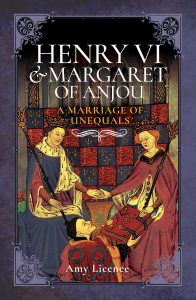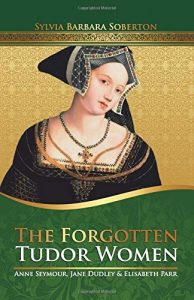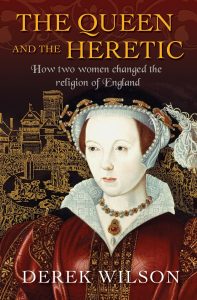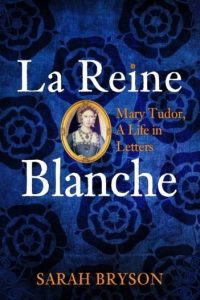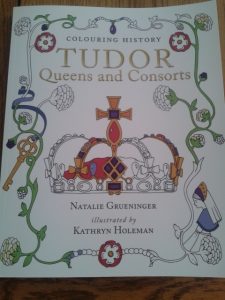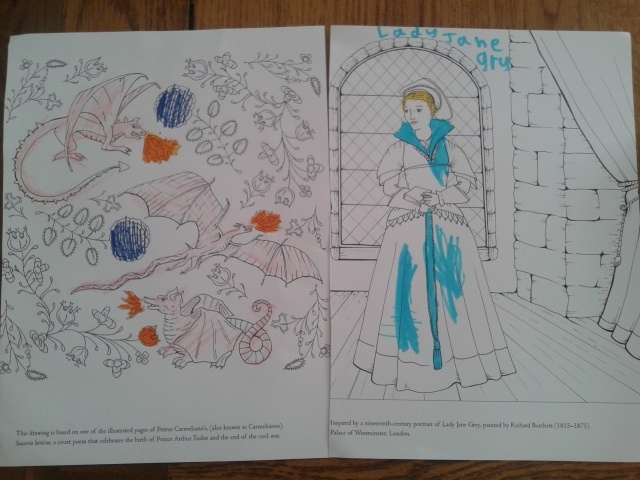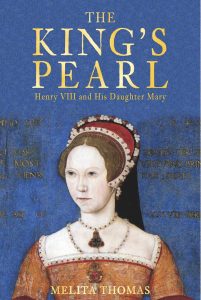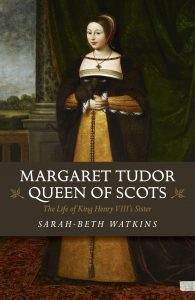A fascinating look at the lives of Henry VI and Margaret of Anjou with the focus on their marriage, as they faced the challenges of ruling 15th century England. Henry has been viewed as unsuitable for kingship but Licence shows how he did his best with the tools available to him but that ultimately circumstances and his health went against him. Margaret might have made mistakes as she tried to hold the throne of England for Lancaster but as Licence asks, what else was she supposed to do other than fight for her husband’s throne and her son’s inheritance?
This very readable book gives a balanced account of the Wars of the Roses and the choices made by the participants in this drawn out conflict that led to the downfall of the players in this unequal marriage.
The second in ‘The Forgotten Tudor Women’ series looks at the lives of Anne Seymour, Jane Dudley and Elisabeth Parr. Three women who’s stories have only previously been covered in relation to the Queens they served and the role of their husbands.
Soberton’s highly readable narrative brings them to the foreground in a clear account of how these women navigated and survived the turmoil of the Tudor court. If fate had been different, Jane Dudley might have been mother-in-law to the Queen of England or Anne Seymour, grandmother to the King. Instead we see the roles they played as their fortunes rose and fell and they are no longer just footnotes in the wider events of Tudor history.
‘The Queen and the Heretic’ is a highly readable account of how the religious changes in England during the reign of Henry VIII influenced the lives of his sixth Queen Katherine Parr, and Anne Askew, who was burnt for her beliefs.
While much is known about the later lives of these two women, Wilson looks at their backgrounds, how both were affected by the Pilgrimage of Grace and the paths they took to both end up in precarious positions in London in the summer of 1546. As the old King played different groups off against each other in the jostle for power during the dying months of his reign, Anne Askew and the Queen were caught up in their games.
Wilson quotes from the writings of both women and this and his in-depth analysis of their work, clearly shows their beliefs, the different ways in which the followed their faith and the influence that the two women had on people around them.
A must read for those wanting to know more the religious changes of Henry’s reign and how they influenced these two very different women.
Thank you to Lion Books for my review copy.
After a general move away from the ‘Bloody Mary’ stereotype in recent biographies, I must admit that my heart sank when I read the title. However, I was pleased to see that although the book focuses on the Marian persecutions, it also explores the reasons behind the burnings, Mary’s character, the roles played by her advisors and her husband and looks at why the burnings failed to achieve their aim.
While not absolving Mary of the blame, Carradice does not exclude the positive achievements of her short reign. For those wanting an introduction to Queen Mary and to the religious burnings, this is a good place to start.
Thank you to Pen & Sword Books for my review copy.
The Poison Bed is an enthralling tale of murder, intrigue and betrayal at the court of James I. The characterisation and historical detail are flawless, as dual narrators (husband and wife, Robert Carr and Frances Howard) recount the events that have left them imprisoned in the Tower and facing trial. Carr is a favourite of James I and Frances, a member of the notorious family dynasty, both have everything to lose. Fremantle’s novel is a thrilling page turner which will keep you guessing until the very end.
Thank you to Michael Joseph Books for my review copy.
Sarah Bryson’s biography of Mary Tudor (youngest sister of Henry VIII) goes a long way towards restoring this Tudor princess to the spotlight she once enjoyed.
Although once described as one of the most beautiful women in Christendom, Mary’s death at the age of 37 was barely noted in diplomatic circles. From the potential bride of Charles V, to her brief reign as Queen Consort of France, Mary’s life was decided by the whims of European politics.
Ruled first by her father, Henry VII, then by her brother, Mary defied Henry VIII by marring a second time, for love. Through this marriage to Charles Brandon, she became the grandmother of Lady Jane Grey.
Bryson’s full use of Mary’s letters, allows Mary’ personality to emerge and we can see how she used letter writing as one of the few political tools at her disposal.
Thank you to Amberley Publishing for my review copy
‘Colouring History: Tudor Queens and Consorts’ by Natalie Grueninger and Kathryn Holeman
When Natalie Grueninger and Kathryn Holeman sent me a copy of ‘Colouring History: Tudor Queens and Consorts’ to review, I knew I would have to call in some expert help.
I showed it to my niece, Cecily (aged 5), she looked through it and said ‘Ooh nice!’
My nephew, George (aged 3 and a half), said ‘Let’s do it!’
I don’t think you can get higher praise than that, and I enjoyed colouring in too!
To buy: Colouring Tudor History
The King’s Pearl: Henry VIII and His Daughter Mary’ by Melita Thomas
This is a meticulously researched and very well written debut by Melita Thomas. Mary Tudor (daughter of Henry VIII and Katherine of Aragon) has been the subject of several biographies in recent years but Thomas manages to find a different angle by focusing on the relationship between Mary and her father. Events in Europe and England are viewed in this context and how these affected Mary’s status as Henry’s heir.
Traditionally Mary I’s relationship with her father, during Anne Boleyn’s queenship, has been viewed as almost non-existent. However, Melita throws new light on this traumatic period of Mary’s life. Her research highlights just how closely Mary was able to keep in touch with the Imperial Ambassador, how far Mary was willing to go to defend her mother and the lessons Mary learned from this.
This biography will have you viewing Mary and this part of her father’s reign anew.
Thank you to Amberley Publishing for my review copy.
Margaret Tudor: Queen of Scots – The Life of King Henry VIII’s Sister by Sarah-Beth Watkins
This concise biography of Margaret Tudor (eldest daughter of Henry VII and Elizabeth of York) is a welcome addition to the ranks of books about the Tudors. Margaret, a Tudor Princess and later a Scottish Queen has been overlooked, even though it was her great-grandson who inherited the throne from Elizabeth I.
Watkins goes some way to addressing this oversight in this fast-paced look at Margaret’s complex life. Balancing the role of Queen of Scots (and later Dowager Queen) and English princess, was a difficult one, especially once Margaret’s younger brother came to the throne as Henry VIII.
Through extensive use of Margaret’s letters, Watkins gives Margaret her voice and clearly illustrates the difficulties Margaret had in appeasing the Scots and her brother. What is particularly poignant is the lack of support she received from the latter.
It is a great starting point for anyone wanting to learn more about this overlooked sister of Henry VIII.
Thank you to Chronos Books for my review copy.

